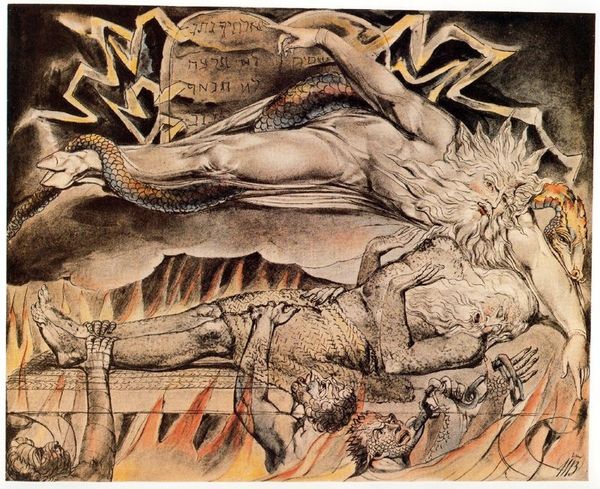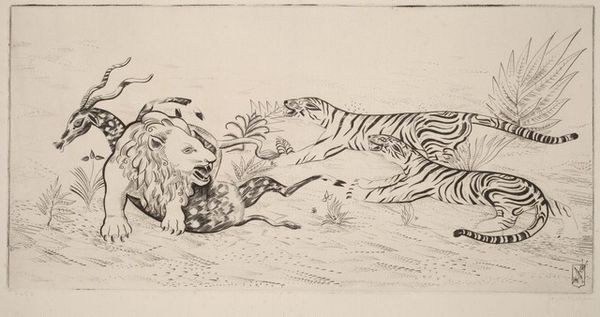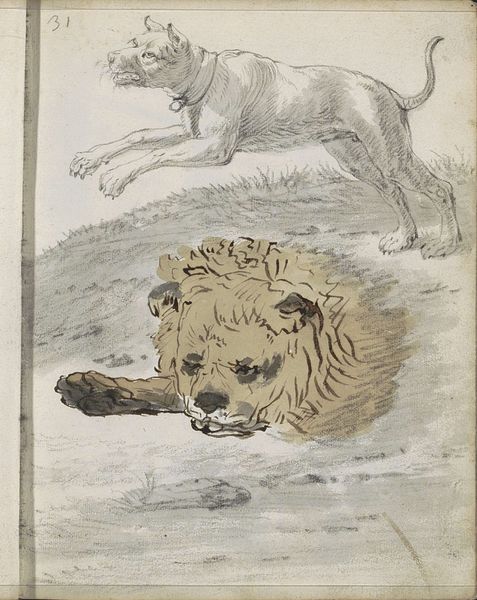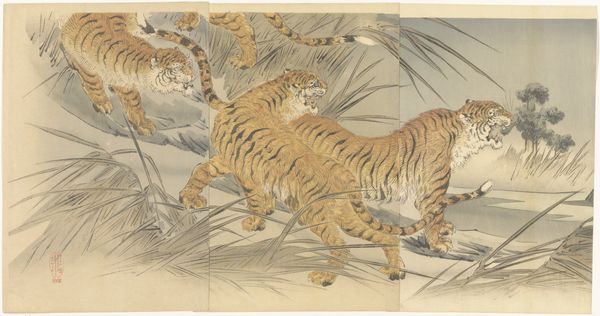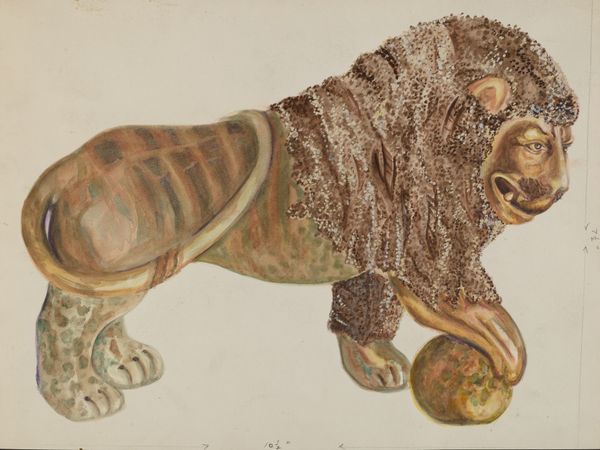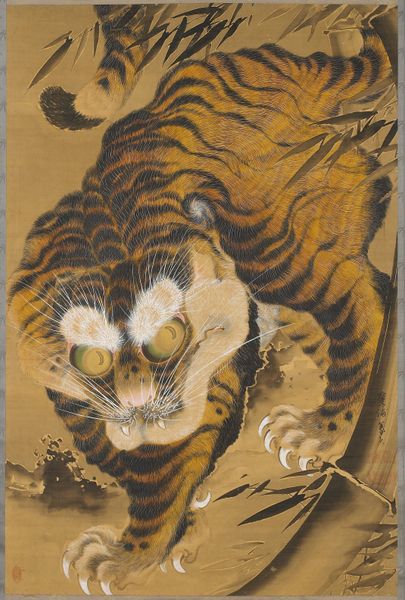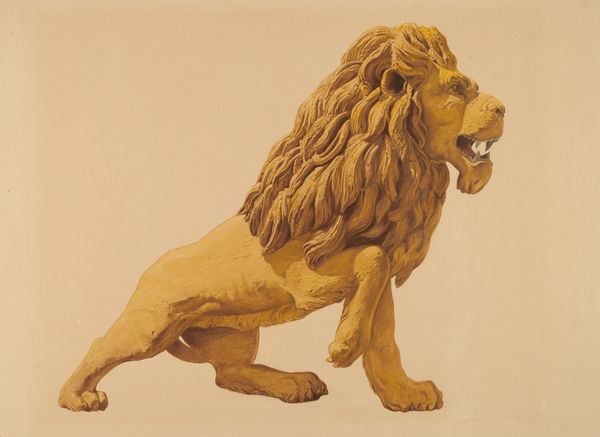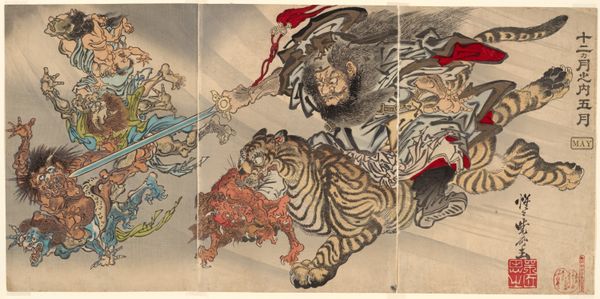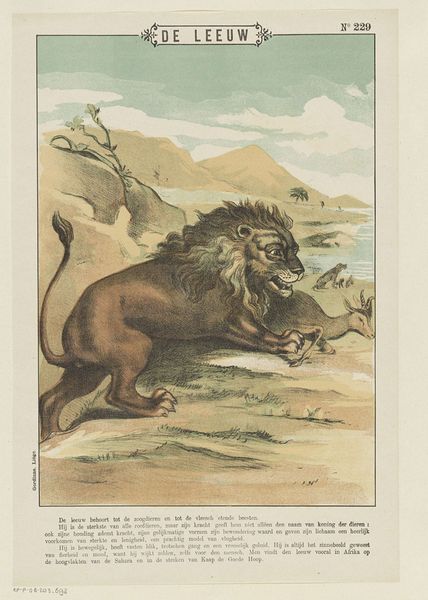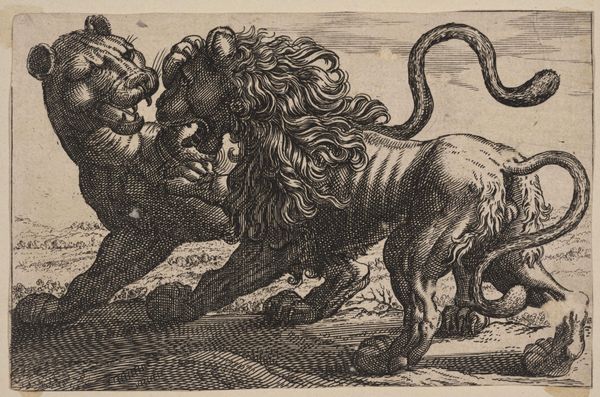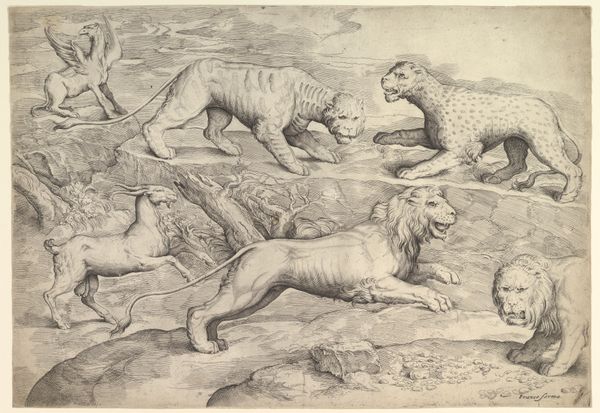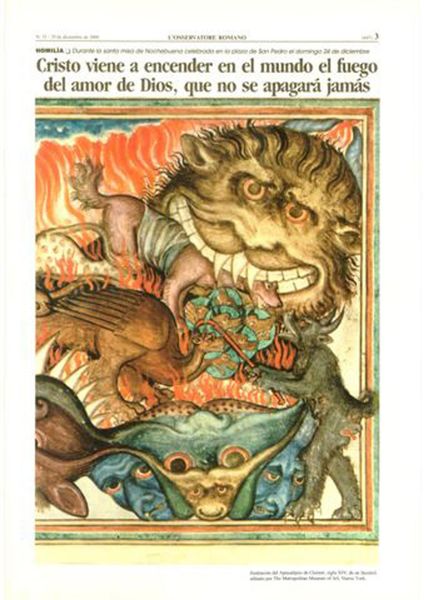
Copyright: Arsen Savadov,Fair Use
Curator: This mixed-media artwork, simply titled "Untitled," was created by Arsen Savadov in 1987. The style evokes both naive art and symbolism. What are your first thoughts? Editor: The dream-like landscape and rather odd juxtaposition of figures strike me immediately. There is an erotic charge, to be sure, yet tempered with a primitive or innocent quality, almost as though one is looking at an otherworldly tableau of raw emotion. Curator: It's interesting you pick up on the erotic charge. It's tempting to connect this figuration with wider social dynamics in Ukraine around that time, a sense of repressed desire perhaps finding visual expression amidst the dissolving Soviet structures. What else do you make of the composition? Editor: The scale of the lion compared to the human figures emphasizes a certain power dynamic, an element of control. This positioning begs questions around the lion as an external projection of masculinity over idealized femininity; the supine woman against angular pyramids invites a reading on the social hierarchies at play. The mark-making and use of watercolor offer a complex interplay between the controlled and uncontrolled. Curator: Exactly! It appears Savadov's employment of "naïve art" lends itself to that, echoing a kind of primitive rawness to explore such loaded themes. There are some institutional framings to consider, too. In '87, artists like Savadov were attempting to carve out their spaces away from purely propagandistic imagery within Ukraine’s evolving cultural climate. Editor: Placing the piece in this historical moment clarifies how this symbolism and, indeed, the very choice of subject matter represents an overt critique of dominant Soviet cultural norms. The erotic and personal taking centre stage against the backdrop of larger social and political shifts, fascinating. Curator: Indeed. Its existence within the history of Ukrainian art becomes much more complex when viewed through this political lens. The question it presents becomes not only “what is it depicting?” but also, “why now?”. Editor: And further, whom is it seeking to represent, reclaim or even, subvert? It certainly invites a dialogue between individual experience, symbolic language, and evolving identity at the intersection of art history and cultural context. Curator: It does provide much to think about and reassess when considering art’s complicated place within cultural transitions. Editor: Agreed, offering both questions and observations as we engage with the artwork's story.
Comments
No comments
Be the first to comment and join the conversation on the ultimate creative platform.
